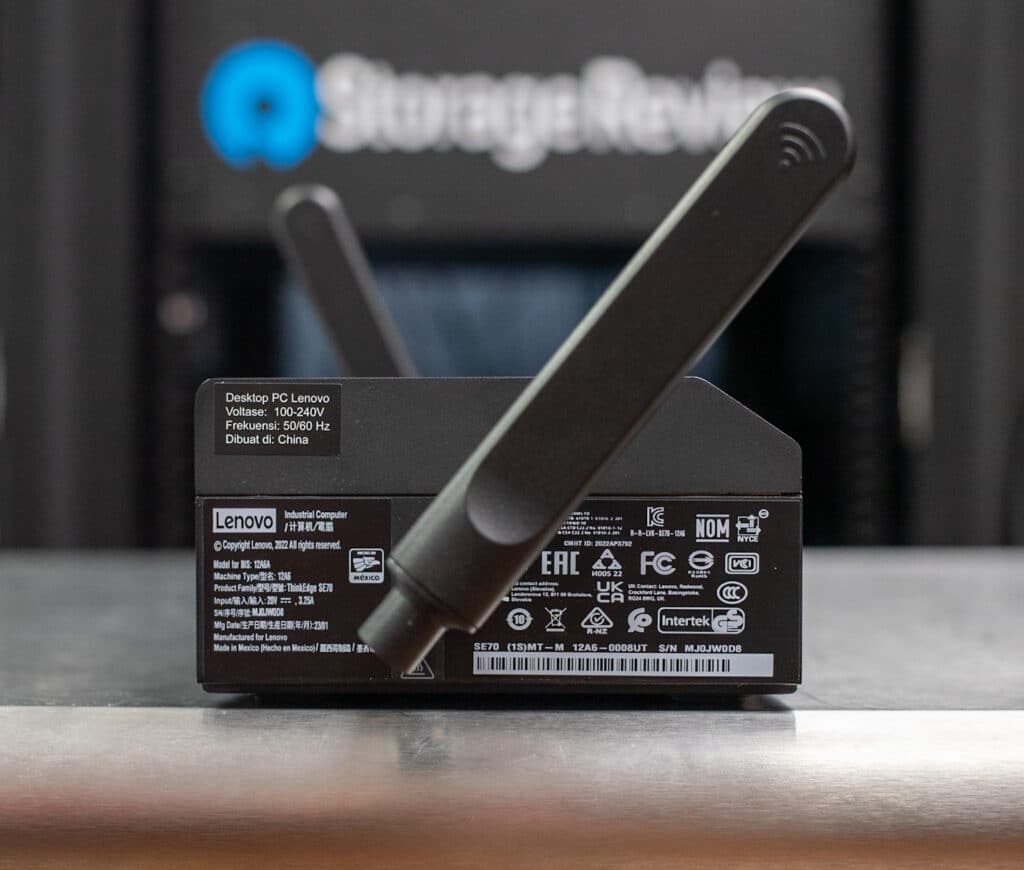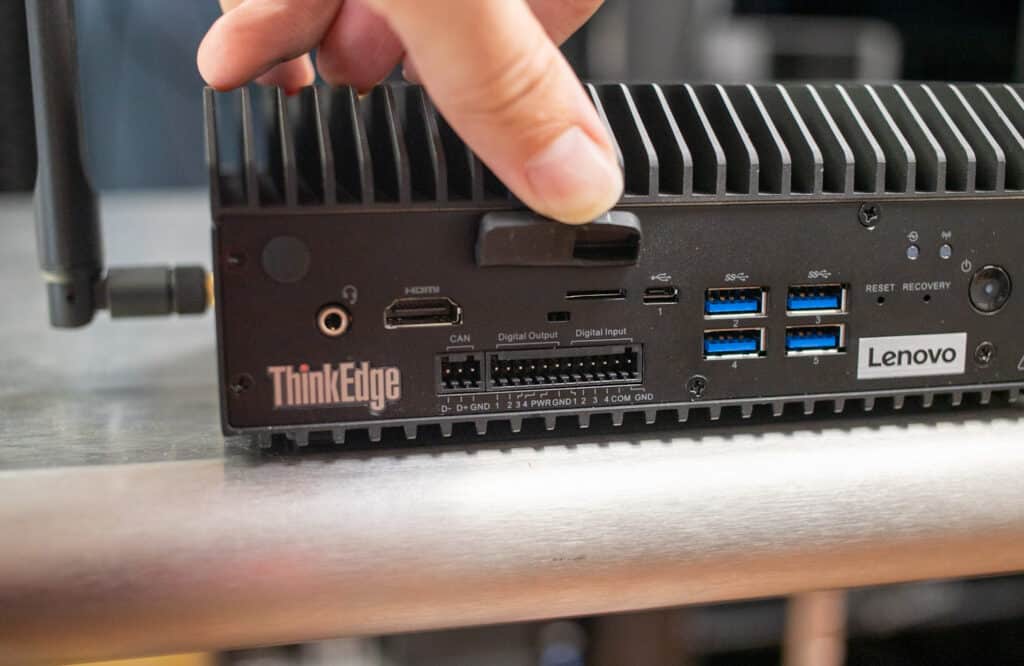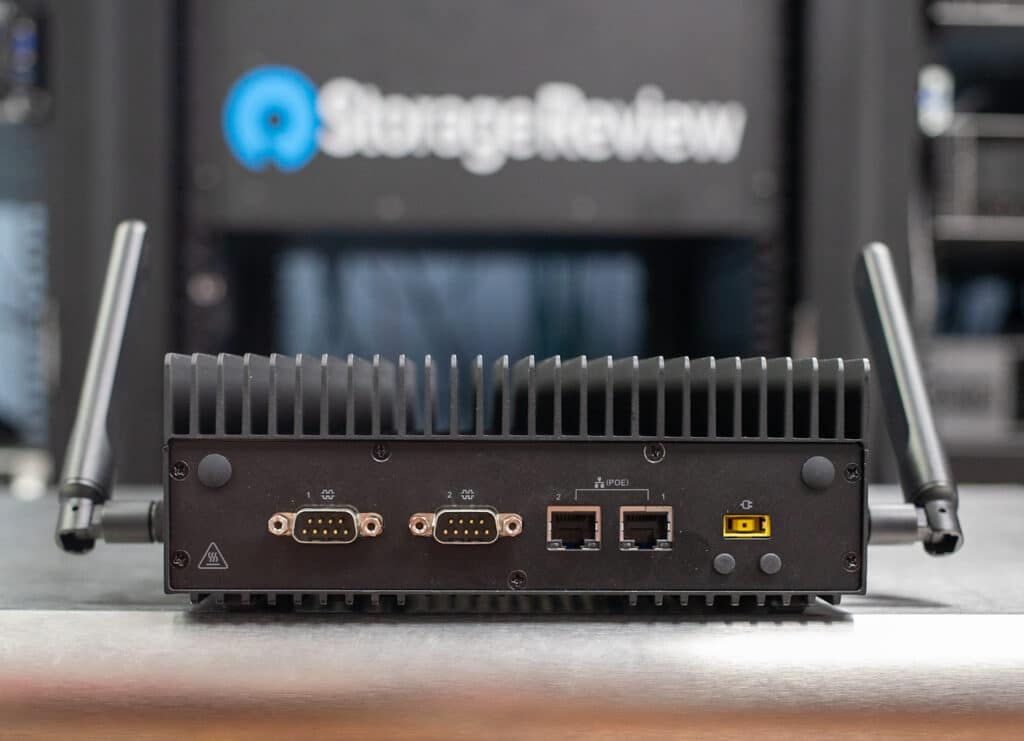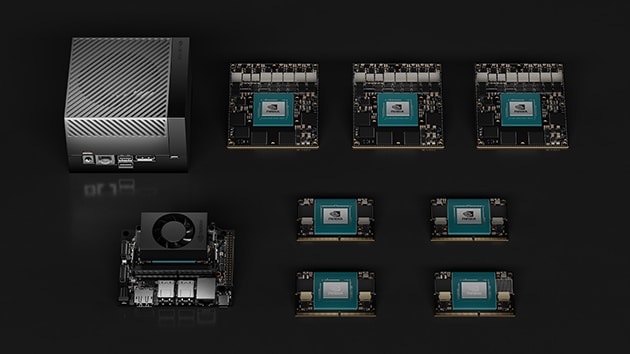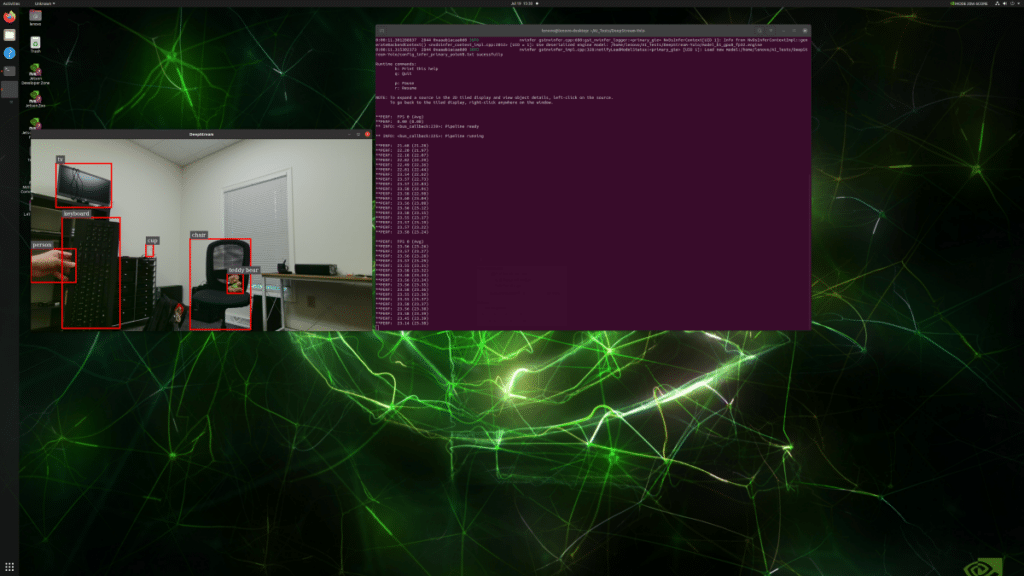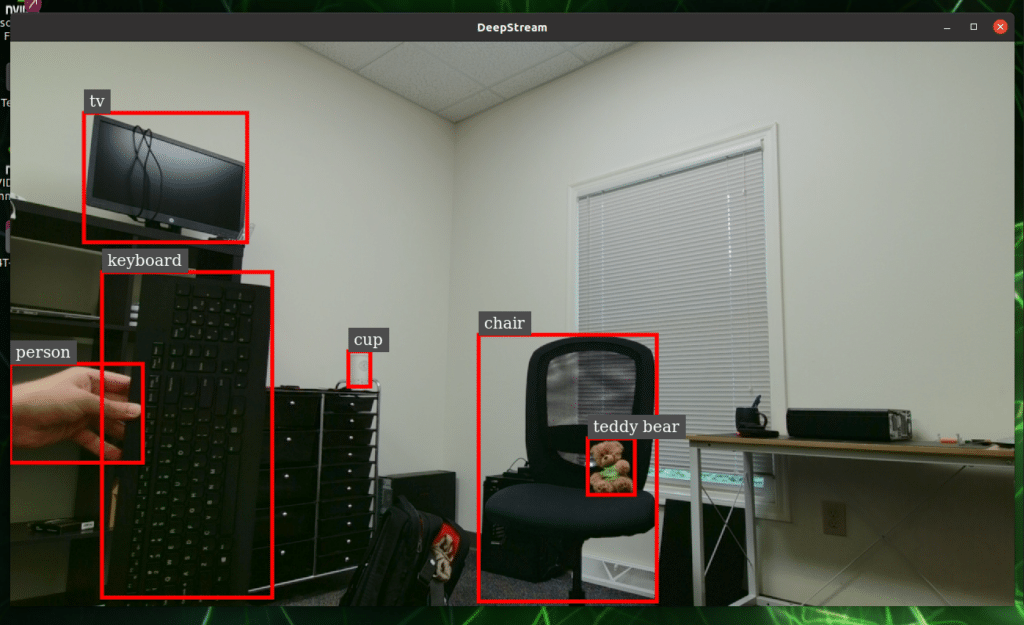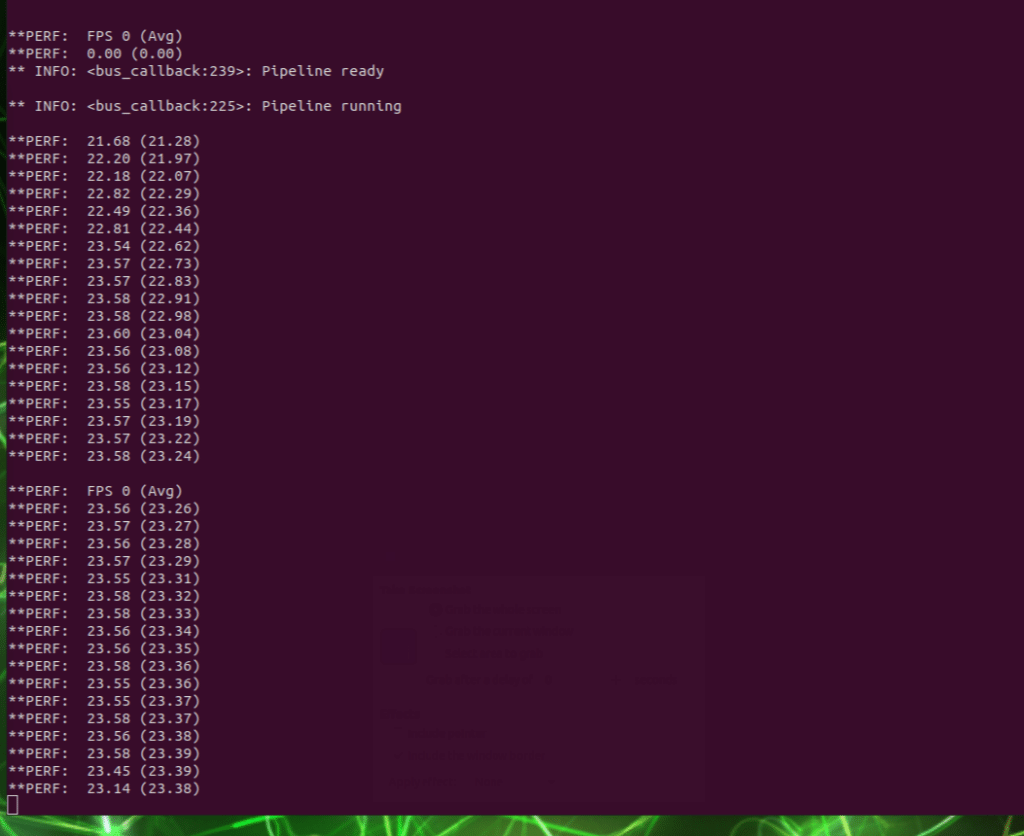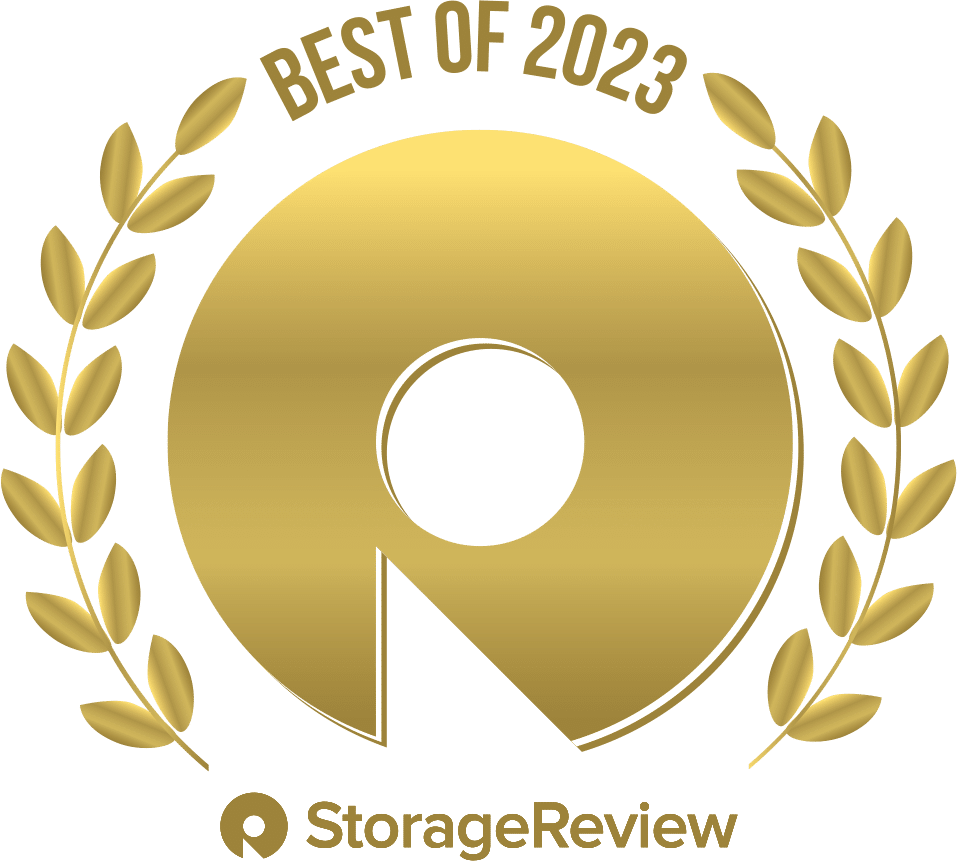Lenovo and NVIDIA have teamed up to develop an advanced AI and computer vision platform, the Lenovo ThinkEdge SE70. This platform has been designed to transform existing camera infrastructures into intelligent automated environments, making it an ideal solution across diverse industries.
Lenovo and NVIDIA have teamed up to develop an advanced AI and computer vision platform, the Lenovo ThinkEdge SE70. This platform has been designed to transform existing camera infrastructures into intelligent automated environments, making it an ideal solution across diverse industries.
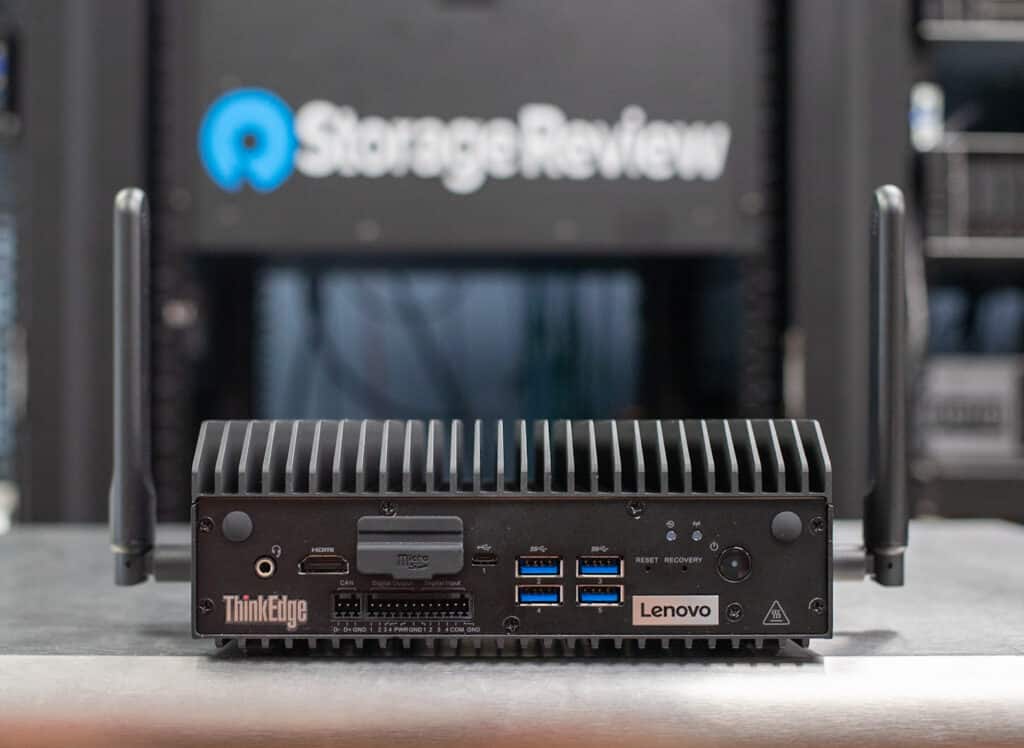
Lenovo ThinkEdge SE70
The ThinkEdge SE70, with cutting-edge engineering, industrial design and build, is a valuable tool to help organizations revolutionize how they utilize their camera infrastructure. It provides a stable and rugged platform for innovative applications limited only by one’s imagination, facilitating the adoption of smart solutions in any industry.
At the heart of the ThinkEdge SE70 is the NVIDIA Jetson Xavier NX module, a small, low-power piece of technology that brings AI-optimized performance to the platform. The system design of SE70 is particularly innovative, providing the flexibility necessary to address a range of vertical market needs, primarily in deploying computer vision.
The ThinkEdge SE70 offers an extensive range of I/O interfaces with a rugged build, which helps organizations to integrate with various peripherals, industrial equipment, and network infrastructures. All of this combined helps it to meet the diverse needs of edge computing tasks, so let’s explore the connectivity options.
The SE70 comes equipped with the usual headphone/microphone combo jack (3.5mm) as well as four USB 3.2 Gen 1 ports, the latter of which provides high-speed data transfer capabilities. This is crucial for connecting external storage devices, cameras, and other peripherals, streamlining data transfer and analysis. The microSD card slot (which is protected by a nice silicone cover) provides expandable storage capacity.
The HDMI 1.4 port gives users a high-definition video output, so you can interface the Lenovo ThinkEdge SE70 with monitors, screens, or projectors. Moreover, the CAN BUS and 1x DIO (4DIx4DO) port is particularly important for industrial applications, as it allows the SE70 to integrate with industrial machinery and control systems. This means real-time data collection and analysis for improved decision-making and automation.
In addition, the two Serial (RS232/RS422/RS485) ports located on the back further enhance compatibility with legacy industrial equipment and devices, which help ensure smooth integration with older machinery that might still be in use.
Next to them are dual GbE Ethernet ports (RJ-45, PoE). Its PoE support is particularly useful, as it simplifies installation and reduces cable clutter–something that is often important for streamlined deployments in all types of environments.
The ThinkEdge SE70 also features a Micro USB OTG (On-The-Go) port, providing an added layer of versatility to the device. With this feature, the SE70 can directly exchange data with other peripherals, eliminating the need for an intermediary computer.
Lenovo ThinkEdge SE70 Specifications as Tested
| Processor | 1x Carmel ARM v8.2 Processor(NVIDIA Carmel ARM v8.2) |
| Operating System | Linux Ubuntu |
| Hard Drive | 1x 512 GB SSD PCIe |
| Wireless Network | 1x Intel® Wireless-AC 9260 2×2 AC; Bluetooth 5.1 or above |
| Ports | 1x 2 COM PORT RS232 Global Headset/Mic Audion Jack DIO /Can Bus MCR Gigabit LAN w/ POE(802.3af) OTG port, Only for flash image HDMI 1.4 High-Speed USB 3.2 Gen1 DC Power In (slim tip or phoenix connector) |
| Graphics | 1x 384 Core Nvidia Volta GPU |
| Form Factor | Passively Cooled Chassis |
| Included Warranty | 3year Courier/Carry-in |
What is the NVIDIA Jetson Platform?
To better understand the SE70’s place in the market, we need to dive more deeply into the underlying Jetson platform. The NVIDIA Jetson platform is a series of embedded computing products from NVIDIA specifically designed to bring AI capabilities to autonomous devices, machines, and robots. Jetson incorporates a unique architecture that combines a high-performance NVIDIA GPU with an ARM-based CPU, enabling the same CUDA native compute applications from the data center to perform in a compact form factor.
The NVIDIA Jetson product portfolio consists of various embedded computing modules designed for machine learning and AI applications. These modules are divided into the Orin, Xavier, and TX2 series and the TX2 Nano models.
The Orin series is the latest in the portfolio and provides the highest AI performance, ranging from 20 TOPS in the Orin Nano Developer Kit to 275 TOPS in the AGX Orin Developer Kit. The series includes three main branches: the AGX Orin, the Orin NX, and the Orin Nano. The AGX Orin, at the top end, provides the highest specifications, including a 12-core Arm Cortex-A78AE v8.2 64-bit CPU, a 2048-core NVIDIA Ampere architecture GPU, and 64GB of LPDDR5 memory. Storage options are varied across the series, with the AGX Orin 64GB supporting external NVMe and the Orin Nano 8GB using a 16GB eMMC 5.1.
The Xavier series represents the middle ground in terms of performance. The AGX Xavier Industrial and AGX Xavier 64GB models, for example, provide a substantial 30 and 32 TFLOPS of AI performance, respectively. All Xavier models employ Arm CPUs, with the AGX models featuring 8-core NVIDIA Carmel Arm v8.2 64-bit CPUs. The GPUs across the Xavier series range from a 128-core NVIDIA Maxwell architecture in the Xavier NX 8GB to a 512-core NVIDIA Volta architecture in the Xavier NX 16GB.
All the models have different connectivity and video encode/decode options, and they all support multiple cameras via their MIPI CSI-2 connectors. They also have varying PCIe configurations and USB capabilities to support a wide array of peripherals and use cases.
The scalable nature of the Jetson platform is important to call out from compute density, energy efficiency, and AI inferencing capability on edge devices. Ranging from the entry-level Jetson Nano with 128 CUDA cores and 4GB of RAM up to the Jetson AGX Xavier with 2048 core Ampere GPU and 64GB of RAM for advanced robotics and AI applications. All Jetson platforms share a common architecture and software, allowing developers to scale their applications across different performance levels and power budgets.
Jetson SDK, A Complete Software Stack
One of the common challenges when using pre-trained vision AI models through brownfield IP cameras is scalability. Here is where the AI capability on NVIDIA’s JetPack Software Development Kit (SDK) shines. Leveraged on the SE70, this AI capability allows organizations to bring computer vision to on-premises cameras, making predictions with high accuracy and low latency. This localized computation is an advantage regarding data security and real-time processing.
The NVIDIA Jetson Software Development Kit (SDK) is an extensive set of software tools and libraries created to expedite the creation and deployment of AI applications. Speaking from experience in the lab, this SDK is quite feature rich and probably deserves an article on its own. It is intuitive to work with (with the relevant prior experience in Python/Linux/AI work), helping to reduce a lot of the barriers to getting started developing on an ARM platform.
The SDK is specifically adapted for NVIDIA Jetson modules and developer kits and ensures a comprehensive development workflow, ranging from cloud computing to edge devices.
The main components of the SDK encompass the following:
- NVIDIA JetPack SDK: As the core layer of the software stack, JetPack SDK equips developers with the necessary tools, APIs, and libraries for the development of high-performance applications. These include NVIDIA TensorRT and cuDNN for AI inferencing, CUDA for generalized computing, VPI for computer vision and image processing, and APIs for multimedia and camera processing.
- NVIDIA TAO & Pretrained AI Models: NVIDIA TAO streamlines the deep learning workflow by offering pre-trained AI models from the NVIDIA NGC™ catalog. It integrates with NVIDIA Omniverse Replicator to produce synthetic data for training AI models.
- NVIDIA Triton Inference Server: Triton Inference Server simplifies the process of deploying AI models at scale across diverse environments. It accommodates multiple framework model inferencing and allows live model updates.
- NVIDIA Riva: This SDK is designed for building comprehensive conversational AI applications. Riva includes pre-trained conversational AI models, the NVIDIA TAO Toolkit, and finely tuned end-to-end skills for speech, vision, and NLP tasks.
- NVIDIA DeepStream SDK: DeepStream provides a complete toolkit for AI-powered multi-sensor processing, video, and image comprehension, helping to convert pixel and sensor data into valuable insights.
- NVIDIA Isaac: This set of hardware-accelerated packages aids ROS developers in building efficient solutions on NVIDIA hardware. It offers tools for synthetic data generation, as well as a simulation application for the design, testing, and management of AI-based robots.
Lenovo ThinkEdge SE70 – A YOLO Wizard
Computer vision, at its core, is a field of artificial intelligence that trains computers to interpret and understand the visual world. By harnessing digital images from cameras, videos, and deep learning models, computer vision systems can accurately identify and classify objects and then react to what they ‘see.’
To implement computer vision in the lab, we employed the You Only Look Once (YOLO) model on the SE70. YOLO is a real-time object detection system currently on version 8 and is highly impressive with its ability to recognize or categorize objects in real-time. Unlike other models that apply machine learning to images in two steps—first identifying objects within an image and then classifying them—YOLO does this in one swift process, hence the name “You Only Look Once.”
YOLO has seen various iterations, with each version aiming to improve the speed and accuracy of object detection. The model’s speed and efficiency make it a good candidate for real-time object detection in applications such as autonomous vehicles, surveillance, or any system where instantaneous recognition is valuable.
Running YOLOv8 on the Lenovo ThinkEdge SE70 platform, you could enhance the capabilities of an existing camera infrastructure. The ruggedized construction and passive cooling combined with Jetson integration bring about real-time object detection, allowing users to develop software to react swiftly and accurately to their environments. The application of computer vision, in this sense, opens up new paths for automation and decision-making processes, enabling organizations to leverage their data more effectively.
By utilizing the powerful capabilities of NVIDIA’s Jetson Xavier NX module and the flexible design of the Lenovo ThinkEdge SE70, organizations can take steps towards intelligent automation in various sectors, driving efficiency and enabling smarter decision-making.
Closing Thoughts
The ThinkEdge SE70 from Lenovo and NVIDIA is an exciting development in the field of AI and computer vision. This intelligent automation platform is poised to transform industries by turning traditional camera infrastructures into intelligent systems. In the lab, we are continuously iterating through various models and platforms, and the SE70 has become one of the favorites for AI CV work, with more to come including guides and other creative uses.
We’ve loved the fanless Lenovo IoT devices from the jump, they combine surprisingly dense tech in a silent chassis that’s more than tough enough for its expected application. The SE70 is even better, delivering a productized version of Jetson to the market in a way that’s easy to consume. The SE70 may not be a mass-market product for Lenovo, but we’re glad it exists and think it’s clearly in the Best of 2023 category.
Engage with StorageReview
Newsletter | YouTube | Podcast iTunes/Spotify | Instagram | Twitter | TikTok | RSS Feed

